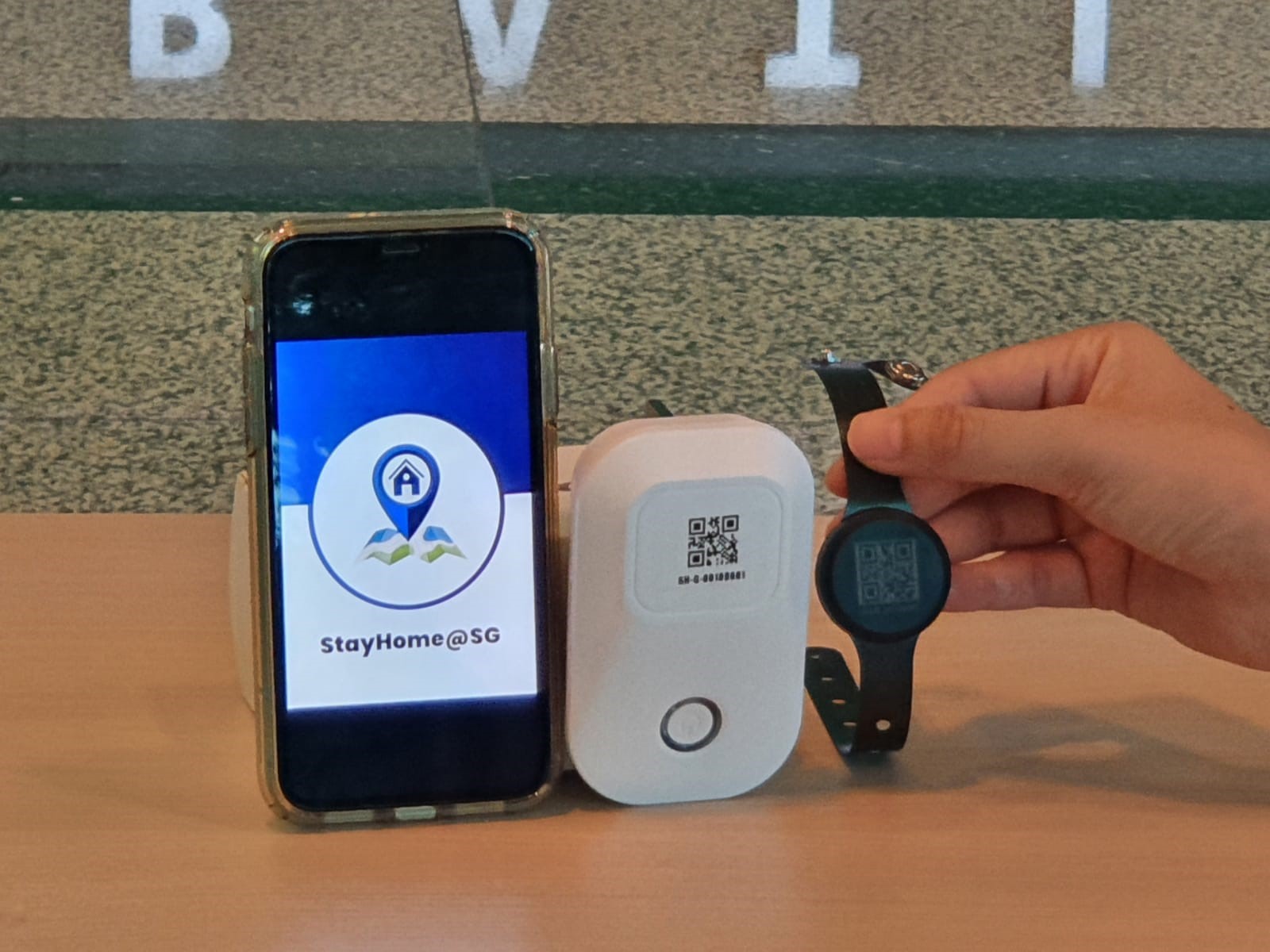
As Singapore prepares for the progressive opening up of their borders in the coming months, the Immigration & Checkpoints Authority (ICA), supported by the Home Team Science and Technology Agency (HTX), have announced in a release that they will be issuing electronic devices from 10 August 2020 to all returning Singapore Citizens, Singapore Permanent Residents and Long-Term Pass holders who will be serving their Stay-Home Notices (SHNs) at their residences or self-paid accommodation.
HTX has said that the electronic devices will help ICA enforce strict compliance with SHN requirements more effectively, and mitigate the risk of imported COVID-19 cases contributing to local transmission. Persons serving Stay Home Notices will be issued an electronic wristband, a gateway device and a user guide after their arrival at immigration clearance. Work Pass holders will be monitored by the Ministry of Manpower using a different monitoring device.
Easy-to-use Technology Aids Stay Home Notice Monitoring
The device needs to be activated once the person serving their Stay Home Notice reaches their place of residence or accommodation.
Activation is straightforward and easy. First step is to download the StayHome@SG application onto their mobile phone, then register their profile by providing the required information through the mobile application, in order to activate the wristband and gateway device.
They can then proceed to plug the gateway device into a power supply source and don the wristband for the entire 14-day SHN period.
During the SHN period, users are required to check their mobile application periodically for notifications from ICA, and acknowledge the notifications in a timely manner through the mobile application. Upon completion of the SHN, users will be informed either by ICA or via the StayHome@SG application to cut the wristband and uninstall the application from their mobile phone.
“We wanted a solution that offers ease of use to PSHNs, but also ensures users’ compliance to SHN. After weighing multiple technical and practical considerations for reliable, efficient and secure operations, we found this e-wristband, paired with an IoT gateway device, to be an effective, self-service solution,” said Deputy Director Seah Swee Leng from HTX’s Sense-making & Surveillance Centre of Expertise. He is part of the cross-departmental team, made up of officers from ICA and HTX that were tasked to source for and customise the solution.
How the Wearable Tech Works
This electronic wristband solution enables ICA to ensure that PSHNs comply with the SHN requirements. It comes equipped with sufficient battery life to last the entire 14-day SHN duration.
Electronic monitoring to ensure the PSHNs do not leave their place of residence/accommodation during the SHN period is done in the following ways:
Bluetooth Low Energy communication between the gateway device and the wristband will enable ICA to determine if the person is within acceptable range of the gateway device.The gateway device establishes its own connection to ICA, which is not dependent on external network access.
When the wristband is detected to be out of range of the gateway device, tampered with, cut or loosened; or when the gateway device is removed from the power supply – ICA will be alerted and will conduct follow-up investigations.
Data Protection is Maintained
All information sent from the wristband to the ICA’s servers is encrypted. At the end of the SHN period, all data collection pertaining to the PSHN will cease and the mobile application will be locked from further usage.
Information collected will be stored and secured in the government database. Data protection measures are in place to prevent data loss or theft, unauthorised access and undue disclosure.
PHOTO CREDIT: www.htx.gov.sg
















